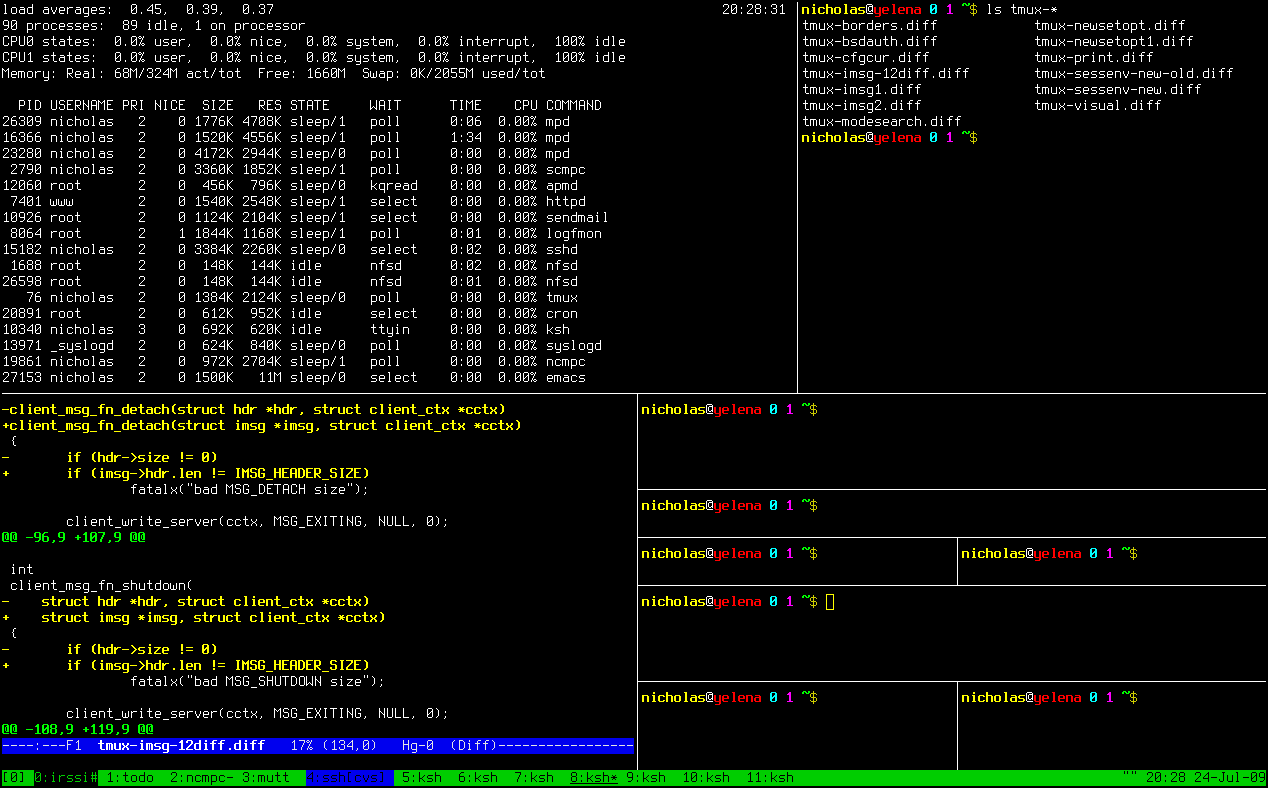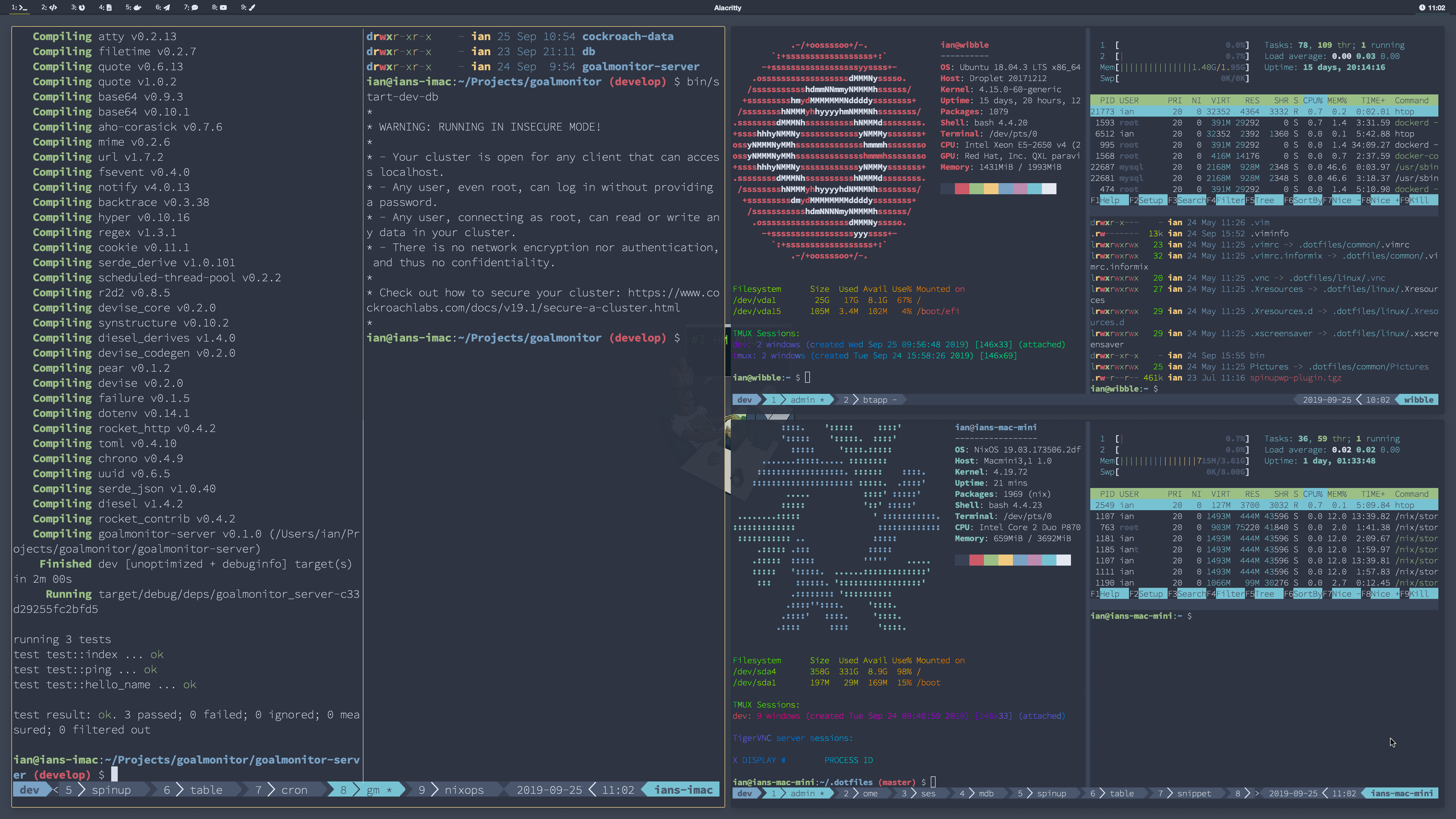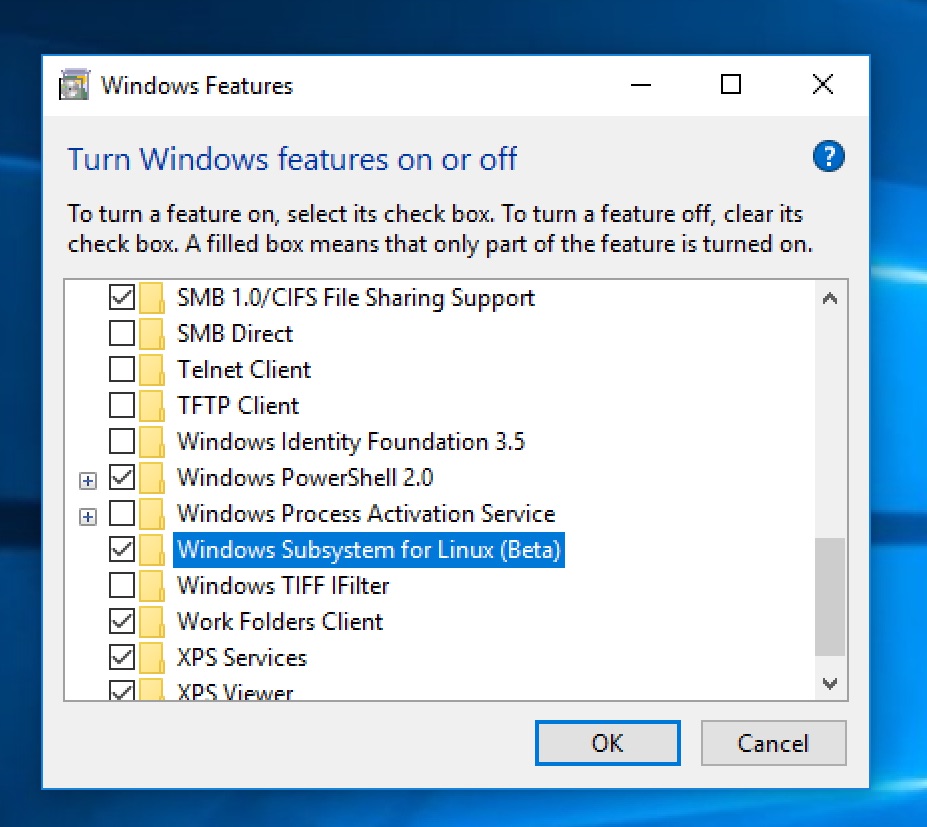
- #Tmux windows install#
- #Tmux windows full#
- #Tmux windows software#
- #Tmux windows free#
#Tmux windows full#
You can adjust a terminal full of haphazardly split panes using these quick presets:

You can split windows that have been split, so the layout is up to you and the number of lines in your terminal.
To create a vertical split, press Ctrl+B followed by % (percent). To create a horizontal split, press Ctrl+B followed by " (that's a double-quote). You can split a window horizontally (meaning the split is horizontal, placing one window in a North position and another in a South position) or vertically (with windows located in West and East positions). Once you have created more than one window in tmux, it's often useful to see them all in one window. This does exactly the same thing as pressing Ctrl+B then C. Type new-window and press Enter to create a new window. For example, to create a new window the hard way, you can press Ctrl+B followed by : to enter the tmux command line. You can also access a tmux command line and type tmux commands by name. All tmux shortcuts, therefore, are prefixed with Ctrl+B. When you press it in a tmux session, it alerts tmux to "listen" for the next key or key combination that follows. The keyboard shortcut Ctrl+B is the tmux trigger. #Tmux windows free#
Free online course: RHEL Technical Overview. You can also "walk" through your open windows using Ctrl+B and N (for Next) or P (for Previous). Press Ctrl+B followed by 1 to go to the first new window you created. For instance, press Ctrl+B followed by 0 to go to the initial window: $ echo hello You can navigate between these two windows by index number. Thanks to tmux, you actually have two windows open, both of which you can see listed in the status bar at the bottom of tmux. It might look like your work has vanished, but actually, you've created what tmux calls a window (which can be, admittedly, confusing because you probably also call the terminal you launched a window). Now press Ctrl+B followed by C on your keyboard. First, do something in your current terminal to help you tell it apart from another empty terminal: $ echo hello There's more going on, though, and you can see it with this little experiment. When you do this, the obvious result is that tmux launches a new shell in the same window with a status bar along the bottom. To start tmux, open a terminal and type: $ tmux #Tmux windows install#
On Mac, use Homebrew.įor example, on RHEL or Fedora: $ sudo dnf install tmux Start tmux
#Tmux windows software#
On Linux and BSD, you can install tmux from your software repository or ports tree. You can build an array of terminals with just a few keyboard shortcuts or a rudimentary tmuxinator script.

However, tmux adds in the ability to split a window into panes, with each pane containing a separate terminal, and each terminal can be logged into a separate host. After all, modern terminal applications, such as GNOME Terminal and Konsole, have tabs built-in by default, and even some very old terminals, such as rxvt, have the ability to add a tabbed interface. The result is a tabbed interface (without the physical tabs), so you can flip from one open terminal to another without having to use the mouse the way you have to when switching from one tab in Firefox to another. Tmux is an open source application that adds layers (or "windows," in tmux terminology) to your terminal window so that you can open more than one terminal in a single desktop window. For that, you need tmux, a single terminal that puts you in control of multiple command prompts. But sometimes you need to run commands manually. Ansible, for instance, ensures all systems are in the same state, and sometimes a simple cron job will do.

There are many ways to automate tasks across systems. Whether you're starting up an elaborate Raspberry Pi homelab or you're managing a building full of workstations, sometimes you need to do the same task on multiple hosts.







 0 kommentar(er)
0 kommentar(er)
